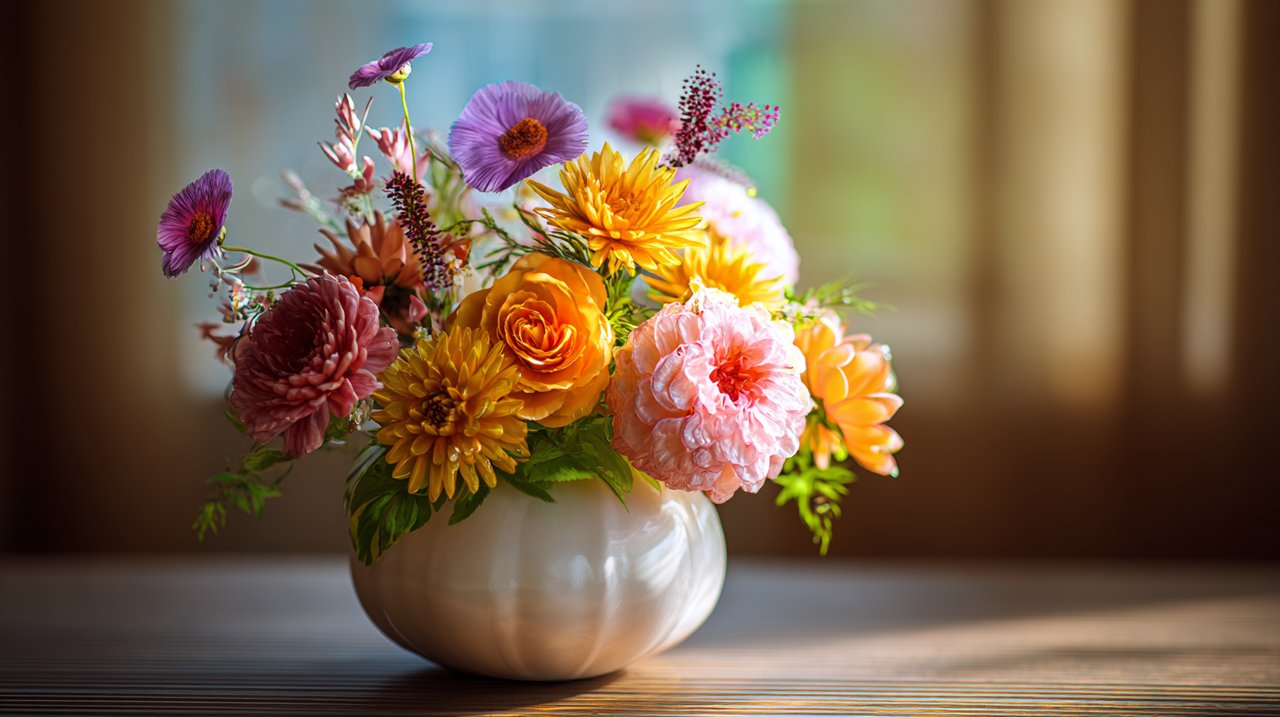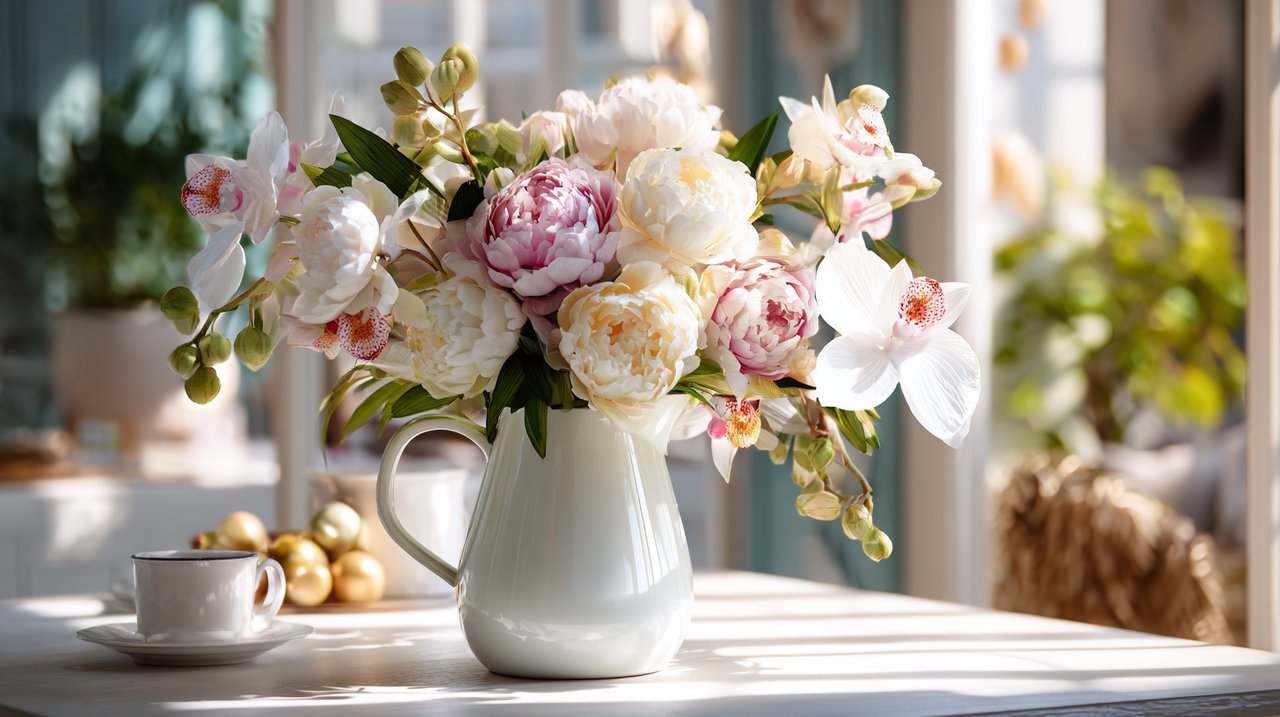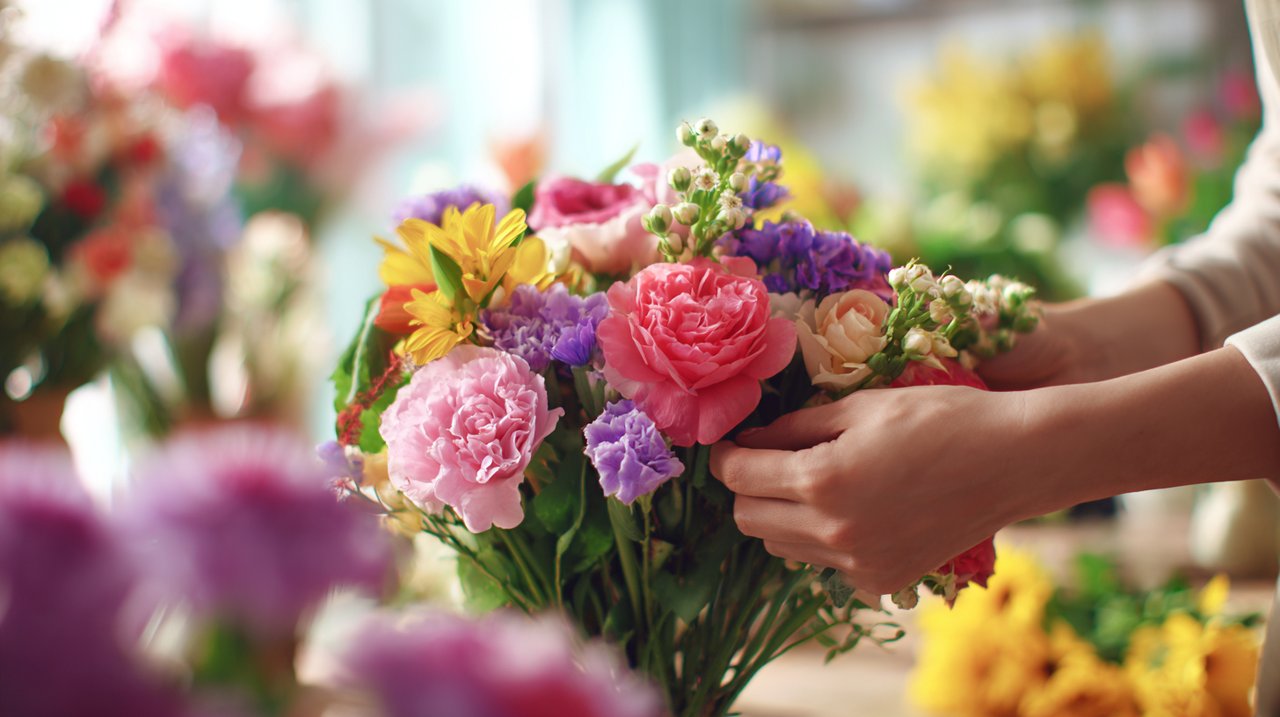The Yin and Yang of Flower Language: Navigating Auspiciousness and Taboo
In Chinese culture, symbolism is rarely a straightforward affair. Think of it like the concept of yin and yang—interconnected, complementary forces that permeate every aspect of life, including the language of flowers.
This means a bloom signifying good fortune in one setting might surprisingly carry a somber association in another. It’s a fascinating dance of meanings, revealing a profound dialectical unity. This complexity also teaches us that many “taboos” aren’t inherently negative; rather, they represent the misuse or overextension of otherwise positive elements.
For instance, some flowers celebrated for longevity are also traditionally used in funeral settings. Similarly, the positive vibe of a number can be overshadowed by its homophonic resemblance to an inauspicious word. Grasping this nuanced balance is absolutely crucial for thoughtful cross-cultural gifting, allowing you to appreciate the full spectrum of a flower’s potential message.
“In Chinese thought, true understanding arises not from separating good from bad, but from discerning their intricate dance and context-dependent transformations.”

A prime example is the number ‘four’ (四, sì), which is highly avoided because it sounds almost identical to ‘death’ (死, sǐ). Conversely, ‘eight’ (八, bā) is exceptionally lucky, as its sound echoes ‘wealth’ (发, fā).
This isn’t just about superstition; it reflects a deep cultural sensitivity to sound and symbolism. In this context, the careful avoidance of the inauspicious actually serves to enhance the presence and power of the auspicious.
Auspicious Blooms: Messengers of Prosperity and Good Fortune
Some flowers in China are universally celebrated as powerful symbols, directly conveying wishes for good fortune, wealth, and honor. Gifting these blooms is a straightforward way to express your best wishes for prosperity and happiness.
Their deep symbolism often originates from their striking appearance, rich historical associations, or even their auspicious names. Here are a couple of prominent examples:
- The Peony (牡丹, mǔdān): Often hailed as the “King of Flowers,” the peony reigns supreme, symbolizing immense wealth, honor, and prosperity. Its lush petals and vibrant colors make it an undeniable choice for any celebratory occasion.
- Orchids (兰花, lánhuā): These elegant flowers represent nobility, integrity, and fertility. Their delicate beauty and refined charm make them a favored choice for conveying respect and sophisticated good wishes.

When you select these flowers, their natural beauty directly reflects your esteem for the recipient. Imagine a grand bouquet of peonies for a business opening or elegant orchids for a new home—each conveys a powerful message of respect and heartfelt wishes for success.
These thoughtful choices are not just beautiful; they are a clear testament to your understanding of Chinese flower etiquette and your genuine desire to send auspicious blessings.
Friendship and Respect: Thoughtful Choices for Lasting Affection
Beyond the grand gestures of prosperity, flowers can also beautifully articulate sentiments of enduring friendship, deep respect, and steadfastness. These particular choices often prioritize qualities like resilience, purity, or intellectual depth, rather than overt opulence. They speak volumes about the quiet strength of lasting bonds.
Here are some excellent options for conveying such sentiments:
- Bamboo (竹, zhú): While not a flower, bamboo is an exceptionally esteemed plant. It symbolizes uprightness, resilience, and longevity. Gifting a bamboo plant, especially “lucky bamboo,” conveys strong wishes for strength and perseverance.
- The Lotus (莲花, liánhuā): This iconic flower represents purity, spiritual enlightenment, and humility. It’s often associated with scholarly pursuits and a noble character.
- Yellow Roses: For expressing friendship, yellow roses are a common and safe choice. They symbolize warmth and joy, carefully avoiding the romantic implications often carried by red roses.
When selecting flowers from the US to China, consider blooms that truly mirror the enduring qualities of the relationship you wish to honor. These thoughtful selections demonstrate a deeper appreciation for the recipient and their cherished values.
Flowers to Avoid: Navigating Potential Misunderstandings
Just as certain flowers bring good tidings, others can inadvertently convey negative messages or associations. Identifying these flowers to avoid when sending to China is absolutely crucial to ensure your thoughtful gesture isn’t misinterpreted.
The reasons for avoidance often stem from deep-seated cultural taboos, specific historical contexts, or unfortunate homophonic similarities. Here are some key examples to be aware of:
- White Flowers: While symbolizing purity in many Western cultures, white flowers are primarily associated with mourning and funerals in China. Gifting them for celebratory events like weddings or birthdays would be a significant cultural faux pas.
- Chrysanthemums (菊花, júhuā): Despite their beauty, chrysanthemums are also strongly linked to funerals and remembrance. This makes them generally inappropriate for casual or joyful occasions.
- Pears (梨, lí) or Pear Blossoms: This is a common pitfall. The word for ‘pear’ sounds identical to ‘separation’ (离, lí). Gifting these could inadvertently imply a wish for the relationship to end.
Our advice? Always err on the side of caution. When in doubt, it’s best to avoid items with potential negative connotations, especially if you’re unsure of the specific context.
The Codes of Color and Quantity: Unlocking Deeper Meanings
The visual impact of flowers extends far beyond their species alone. In Chinese symbolism, both color and quantity carry significant weight. These elements act as crucial additional layers of the “silent language,” subtly reinforcing—or even altering—the primary message of the blooms themselves.
Ignoring these intricate codes can inadvertently dilute, or even reverse, your intended sentiment. Let’s break down some key considerations:
Colors and Their Meanings:
- Red (红色, hóngsè): This is by far the most auspicious color, symbolizing luck, happiness, and prosperity. You’ll find it ubiquitous in all celebrations, from weddings to New Year festivities.
- Yellow (黄色, huángsè): Historically, yellow represented royalty and imperial power. Today, it generally signifies respect and good fortune, though it can also be associated with mourning in specific, nuanced contexts.
- White (白色, báisè): As we’ve discussed, white is predominantly linked to purity and, importantly, to death and mourning.
Numbers and Their Significance:
- Even Numbers: Generally preferred, as they symbolize completeness, balance, and harmony.
- The Number Eight (八, bā): Exceptionally lucky! This is due to its phonetic similarity to ‘wealth’ (发, fā).
- The Number Four (四, sì): Highly taboo, as it sounds almost identical to ‘death’ (死, sǐ).
While gifting a single flower can beautifully signify ‘only one love,’ generally, multiples are a safer bet, especially if they are even numbers, to convey harmony and good wishes.

Context is Key: Matching Blooms to the Occasion
The ultimate determinant of a flower’s appropriateness truly lies in the specific occasion for which it is intended. A flower considered highly auspicious for a birthday, for instance, might be entirely unsuitable for a hospital visit, beautifully illustrating the fluid nature of Chinese flower etiquette.
Your ability to thoughtfully match the bloom to the event is a powerful way to showcase both your consideration and cultural sensitivity. Let’s look at some common scenarios:
- Birthdays (especially for elders): Excellent choices include flowers symbolizing longevity, such as orchids or peach blossoms.
- Business Openings: Opt for vibrant red flowers or lucky bamboo plants to convey wishes for success and prosperity.
- Hospital Visits: Here, you should definitely avoid strong scents or white flowers. Instead, choose cheerful, brightly colored blooms that suggest recovery and vitality.
- Funerals: White or yellow chrysanthemums, or other simple white flowers, are appropriate. Crucially, avoid any reds or overly vibrant colors, as these are associated with celebration.
By understanding the true purpose of your gift, you can select flowers that perfectly resonate with the emotional and cultural landscape of the event. This ensures your act of gifting flowers from the US to China is always perceived as a gesture of genuine care and respect. For comprehensive insights and micro-guides specifically designed for precise delivery of your sentiments when sending flowers from the US to China, you can find more detailed information here 从美国向中国发送鲜花:确保情感精准传递的六个微型指南.
Ultimately, the act of sending flowers transcends mere aesthetics; it is a profound form of communication, especially when bridging cultural divides. As we’ve explored, Chinese flower etiquette is a rich tapestry, intricately woven with threads of philosophy, history, and social harmony.
By truly understanding flowers as a silent language, you gain the remarkable power to convey respect, affection, and auspicious wishes with unparalleled precision.
This journey through the yin and yang of flower symbolism empowers you to move beyond superficial choices. It enables you to appreciate the deep cultural logic that governs these traditions, ultimately fostering more meaningful and authentic cross-cultural connections.
So, the next time you consider gifting flowers from the US to China, let these insights be your trusted guide. Your thoughtful gesture will not only be received with gratitude but will also speak volumes about your understanding and profound respect for Chinese culture.
💡 Frequently Asked Questions
In Chinese culture, flower language symbolizes interconnected meanings, where a flower may represent good fortune in one context and a somber association in another. This complexity highlights the importance of understanding cultural nuances in gifting.
Flowers like peonies and orchids are considered auspicious in China. Peonies symbolize wealth and honor, while orchids represent nobility and integrity, making them popular choices for expressing good wishes.
Flowers to avoid include white flowers, which are associated with mourning, and chrysanthemums, which are linked to funerals. Also, pears should be avoided as they phonetically resemble the word for 'separation.'
In Chinese culture, colors and numbers hold significant meaning. For example, red symbolizes luck and happiness, while even numbers are preferred for their connotation of balance and harmony.
Choosing flowers for an occasion requires understanding the event's context. For birthdays, flowers symbolizing longevity are ideal, while business openings call for vibrant red flowers or lucky bamboo to convey success.

